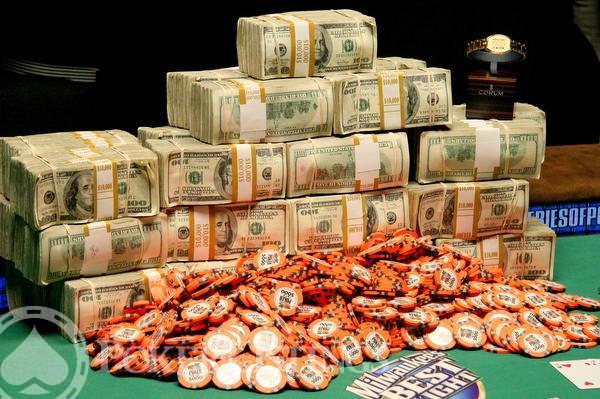Huge Stack Of Poker Chips
In tournament poker a 25-35BB stack is great for restealing. When tournaments get to the late stages, players try and pad their stacks by stealing blinds. A 25BB stack makes for a great-sized stack for restealing. The reason for this is that you’ve got a huge insurance policy in the form of a big stack, and if they lose their smaller one, they’re out. Something to remember when you’re starting off a hand as a big stack owner is how your position at the table will affect how you should make use of all your chips.

Chip stack size is crucial when playing any form of poker, especially in no limit holdem for both cash games and tournaments. Your stack size or that of your opponents will play a significant role in your overall strategy as well as theirs. A player with a large stack size will be more inclined to push whereas the small stack will become passive in his attempt to gain chips. In a cash game, players who buy-in for max often have the bankroll to play for those limits, which means their game is better adjusted should they lose. Whereas a player who buys in for a smaller amount, sometimes not quite meeting half the max buy-in, is either playing above their means, or lacks confidence in their abilities. Not to mention they can be easily pushed around given they are most likely concerned about the size of their bankroll.
Big Stack Strategy and Benefits
There are obvious benefits to holding the big stack, and of course drawbacks to coming up short. Besides having luck on your side and possibly taking down the game, chip stack size plays a critical in tournament play, especially when closing in on the bubble. Large chip stacks will push players into difficult decisions they wouldn’t otherwise make had they had the number of chips required to match you. Often called bullying, the large chip stacks will fire away bets in hopes that a player will fold rather than risk their hand on draws. This of course means small stack players will in most circumstances fold to these bets unless their hand is above average. If the board isn’t showing any flush or straight draws it’s generally the perfect scenario for the chip leader to push his opponents off of their hands. The same holds true for cash game players who are submissive to a player who dominates them in chips.
Big Stack Of Poker Chips
The second benefit to having a bigger chip stack is of course the number of successful bluffs you will be able to pull off. As the smaller player is more inclined to fold, you can typically fire a number of raises pre-flop to blind him or force his play. If the small stack calls you can assume his hand is above average and should play with caution on the flop. Generally, these players will be waiting for monster hands so any board that represents a draw should be taken into consideration before you fire a bet on the flop.

Short Stack Strategy
Huge Stack Of Poker Chips
That said if roles are reversed and you’re playing with a lesser stack than your opponent you need to take into consideration what the bet will cost you in relation to your chip stack on the flop, turn and river plus the number of cards available to complete your hand. If your current chip stack is 1500 against someone holding 25,000 it’s a no brainer that he can take you out in one swoop. You’re holding a mediocre hand at best, let’s say 10d9s, and you’ve paired the board as well as hold a possible inside straight draw. Assuming the other player bets 200 to a 20 pot, you can be pretty sure his next bet will be at best pot size on the turn if not more. Do you call the first bet and be forced to call the second? At this point you’re looking at min 620 chips out of the 1500 in your hand, which basically means you committed to seeing the hand all the way through. On the flop you have four cards to complete your straight draw, and can possibly hit a second pair or a set, leaving you with a total of 11 outs.

:max_bytes(150000):strip_icc()/Pokerchips-590f911d3df78c9283b5434d.jpg)
Do you risk your hand in hopes of catching one of four cards to complete your straight, or do you think your pair or second pair will beat him? Given the 12% – 17% probability of improving either of these hands by the river, it’s easy to see why strategy plays such an effective role in relation to chips stacks. Unless the small stack has an above average “made” hand they can’t afford to risk their chips, in either tournament or cash games.